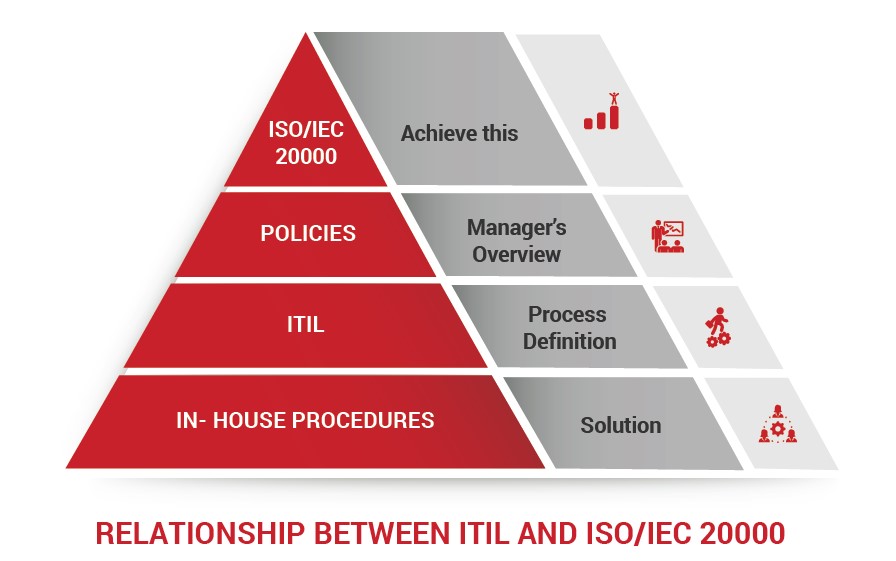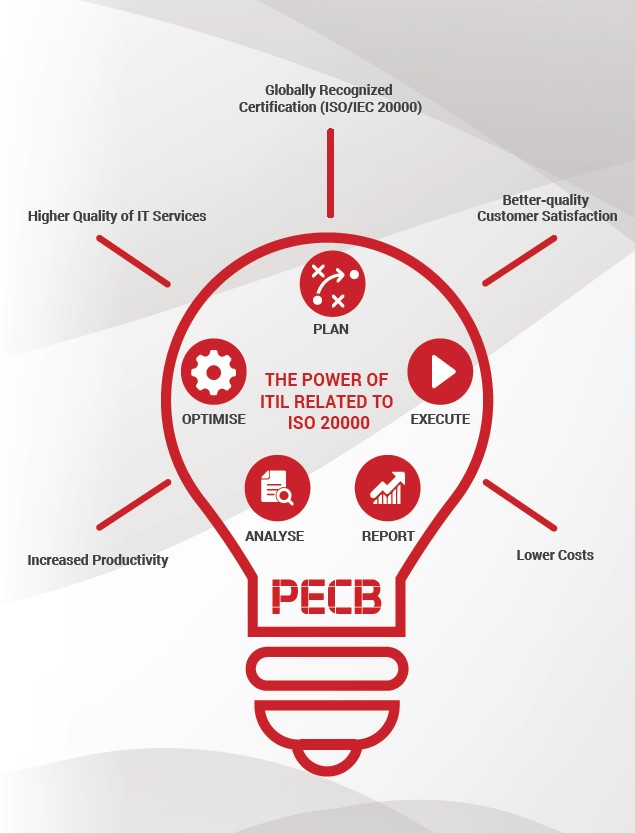In this article, you will find out why and how the combination of ISO/IEC 20000 and ITIL after being applied to your business can lead to better organizational accomplishment and set your business up for greater returns.
IT management requires risk management, governance, metrics, structure and regular development progress to improve performance and to be effectively combined with greater business objectives. In possible enhancements of the distribution, technology performance and management allow delivery for the business. International standards like ISO/IEC 20000 and the greatest practice frameworks like ITIL have the ability to influence companies, in order to make sure their investments in business technology provide results.
Frameworks and standards are significant tools that allow the Chief Information Officer and other IT managers to have benchmarks, make developments, and check their IT operation performances. In case of using it effectively, ITSM standards and frameworks could provide correct evaluation of what is and what is not working properly, how much IT truly costs and which bottom line price is being provided to the business. In other words, the framework of ITIL contains the best practices for running an Information Technology Service Management System (ITSM). It mainly brings business requirements and IT services into alignment.
Briefly, the framework of ITIL plays the role of a guideline for organizations on how to manage their operations in IT, so it can support in a best way the business processes of companies, such as product development, finances management, customer services, research and development, etc. This means, ITIL is making smart developments to management processes of your IT service. It doesn’t matter in how big organization or business you are; ITIL can support your institution by providing best practices in IT Service Management System (ITSM).
“What does ISO/IEC 20000 have that ITIL doesn’t?” It is our good specification about what the service provider of IT needs to do. It defines requirements for design and transition of new or changed services, service delivery, relationship, resolution and control processes. Also, it provides general requirements for service management system. Moreover, ISO/ IEC 20000 is offering improvement of the process or application of new part in a planned and convenient way. While ITIL offers assistance and recommendation that can be adapted to, ISO/IEC 20000 states the standard requirements when the organization is being measured as world class. ITIL is full of guidance on what you should do, what you can do, or what would be the best way to do it, and so on. In general, the requirements are not difficult to understand over what has to be done. Thus ITIL is not completely auditable, but in the other hand, ISO/IEC 20000 is auditable.
Unlike ITIL that is a framework for customers to adopt in their organization, certification of ISO/IEC 20000 is something that must be obtained. It is a certification awarded to organizations that have been able to fulfill the requirements of the standard successfully in their IT departments; and it serves as a standard representation that the business holds for their operations in IT.
Implementing ISO/IEC 20000 /adapting ITIL could provide a great range of benefits to your business, including:
1. Higher quality of IT services
2. Increased productivity
3. Lower costs
4. Better alignment of IT services and the business it supports
5. Globally recognized Certification (ISO/IEC 20000)
6. Competent IT service management organization
7. Better-quality customer satisfaction (more professional service delivery)
Why is ISO/IEC 20000 certification so important?
This certification simply can provide a competitive edge to organizations compared to other organizations that don’t have this standard. ISO/IEC 20000 is a code which gives a yardstick in order to measure and approve the success of the business to adapt the finest practices as stated by ITIL. It also provides an option of measuring how well the business is going in its quest to constantly develop ITSM.
A set of management processes that are designed to assist you in sending more operative IT services is what the standard describes. So, high quality management standards of IT services are very important elements for your accomplishment, and getting the ISO/IEC 20000 certification is a way to guarantee that quality. The most important thing to know about ITIL and ISO/IEC 20000 is that they both need constant development, which may grow the competitiveness and credibility of the business.
It is known that best practices such as ITIL and ISO/IEC 20000 are recognized globally as benchmarks for process development in the department of IT Service Management. ISO/ IEC 20000 is a standard with openly stated requirements that have to be met for certification when a minimum of the finest practice standards are matched. ISO/IEC 20000 is ITIL based, but ITIL is created with ISO/IEC 20000 in mind, so they both complement each other very well.
In conclusion, ISO/IEC 20000 explains what we need to do, while ITIL shows us how to do it. ISO/IEC 20000 can be used to measure and implement processes of high level, while ITIL is very useful for the details.
PECB offers ISO/IEC 20000 training and certification services for professionals wanting to support organizations on the implementation of these management systems. Design, delivery and improvement of services that fulfill customer requirements have become very important for IT providers. For further information, click here.
About the authors:
Silvana Tomić Rotim, is a consultant and trainer at ZIH. She is also a Certified Quality Lead Auditor, Certified IS Auditor, Certified Information Security Lead Auditor, Certified Management Consultant (CMC), Certified Management Trainer and a Certified TickIT Lead Auditor. If you have any questions, please do not hesitate to contact her: stomic@zih.hr.











